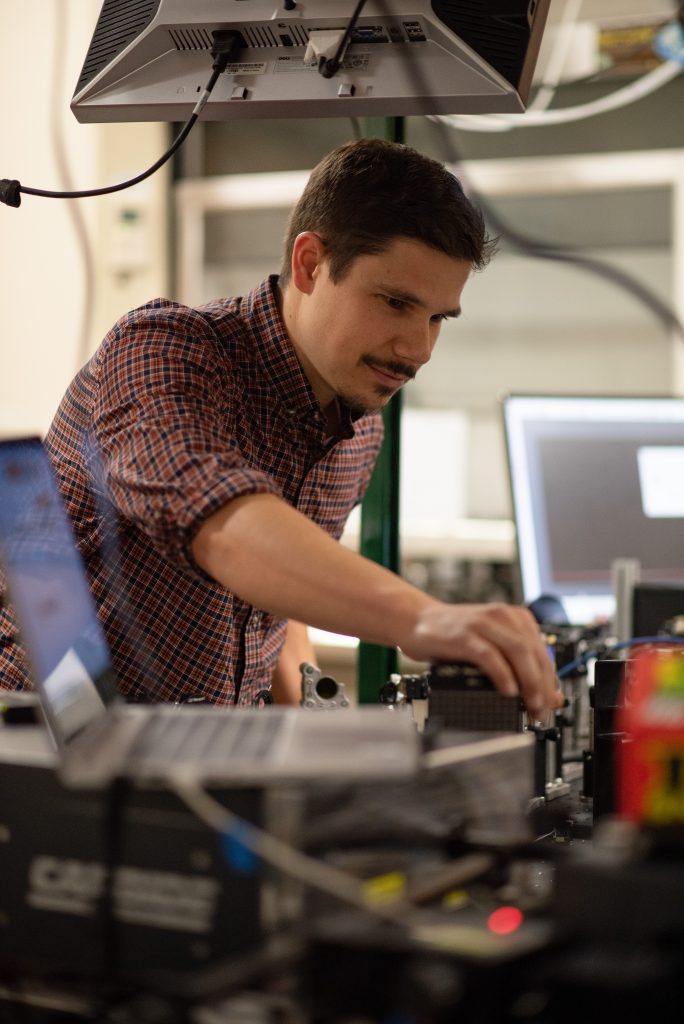Physics Ph.D. Student Pushes the Frontiers of Attosecond Physics
A physics Ph.D. student will travel to California next year to conduct research in attosecond physics through a U.S. Department of Energy program.

The program allows Chris Lantigua to continue his research into ultrashort pulses of light, which he currently pursues in the laboratory of Associate Professor Michael Chini, Ph.D. Through the DOE’s Science Graduate Student Research program, Chris will have the opportunity to work at SLAC National Accelerator Laboratory, a national laboratory where scientists are generating the highest intensity attosecond x-ray pulses in the world, which are then used in advanced experiments focusing on the motion of electrons in atoms, molecules and solids.
An attosecond is a billionth of a billionth of a second and the natural timescale of electron motion within an atom. Probing the dynamics of this electron motion is accomplished through the generation of ultrashort pulses of light, which last only a few tens or hundreds of attoseconds.
At UCF, Lantigua’s research has focused on generating attosecond light pulses from tabletop laser setups. At SLAC, the attosecond sources operate with much higher intensity, and extend further into the X-ray spectral range than what is achievable with laser setups. It is a complex science that requires measurement techniques at the frontiers of time resolution. Lantigua’s dissertation research, based on his work at SLAC and at UCF, will focus on the development and applications of a timing tool that will precisely measure the arrival of the X-rays on a sample and allow them to synchronize with other sources of laser light or particles for experiments.
The use of attosecond pulses is a growing area of study. At the beginning of October, the Nobel Prize in Physics was awarded to researchers who made pioneering contributions to experimental methods in attosecond physics. For Lantigua, that’s a big part of the appeal.
“Every area of science has its frontier that you can continue to push,” he said. “I enjoy the challenge. I enjoy problems that don’t (yet) have solutions.”
Chini is proud of the opportunity awarded to Lantigua, and excited to see what the future holds.
“I try to push the students in my group to think about solutions to problems that are nearly impossible to solve but important to the advancement of science,” Chini said. “If successful, Chris’s project could provide a major leap forward in attosecond science and its applications.”
Lantigua moves to California next March to begin research at SLAC National Accelerator Laboratory near San Francisco under the supervision of Matthias Kling, a professor of Photon Science at Stanford University and the director of the Science, Research and Development Division for the Linac Coherent Light Source at SLAC.
The position not only offers unique learning opportunities, but a chance to form career connections with other researchers who share their enthusiasm for attosecond science.
“Whether I go into academia or another direction, this a great opportunity,” he said.
